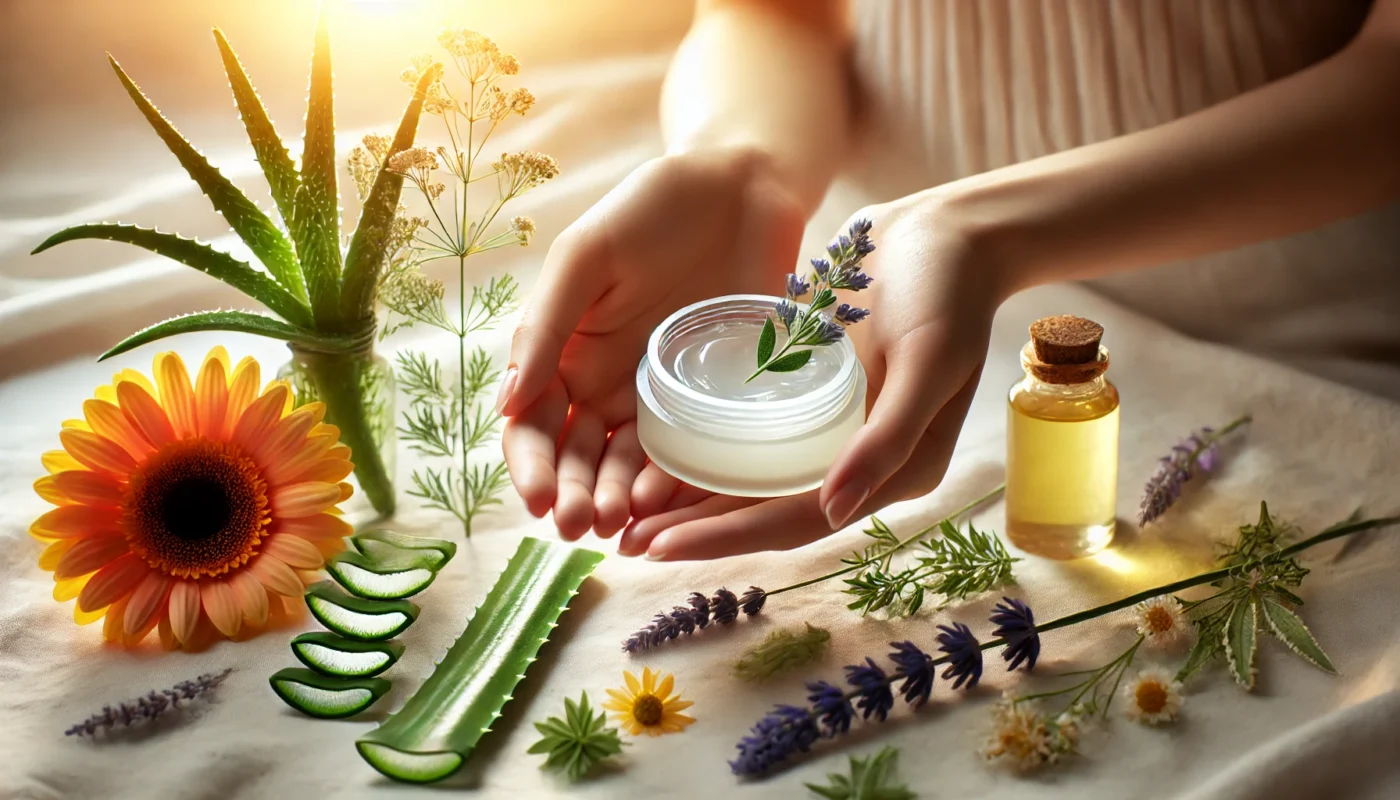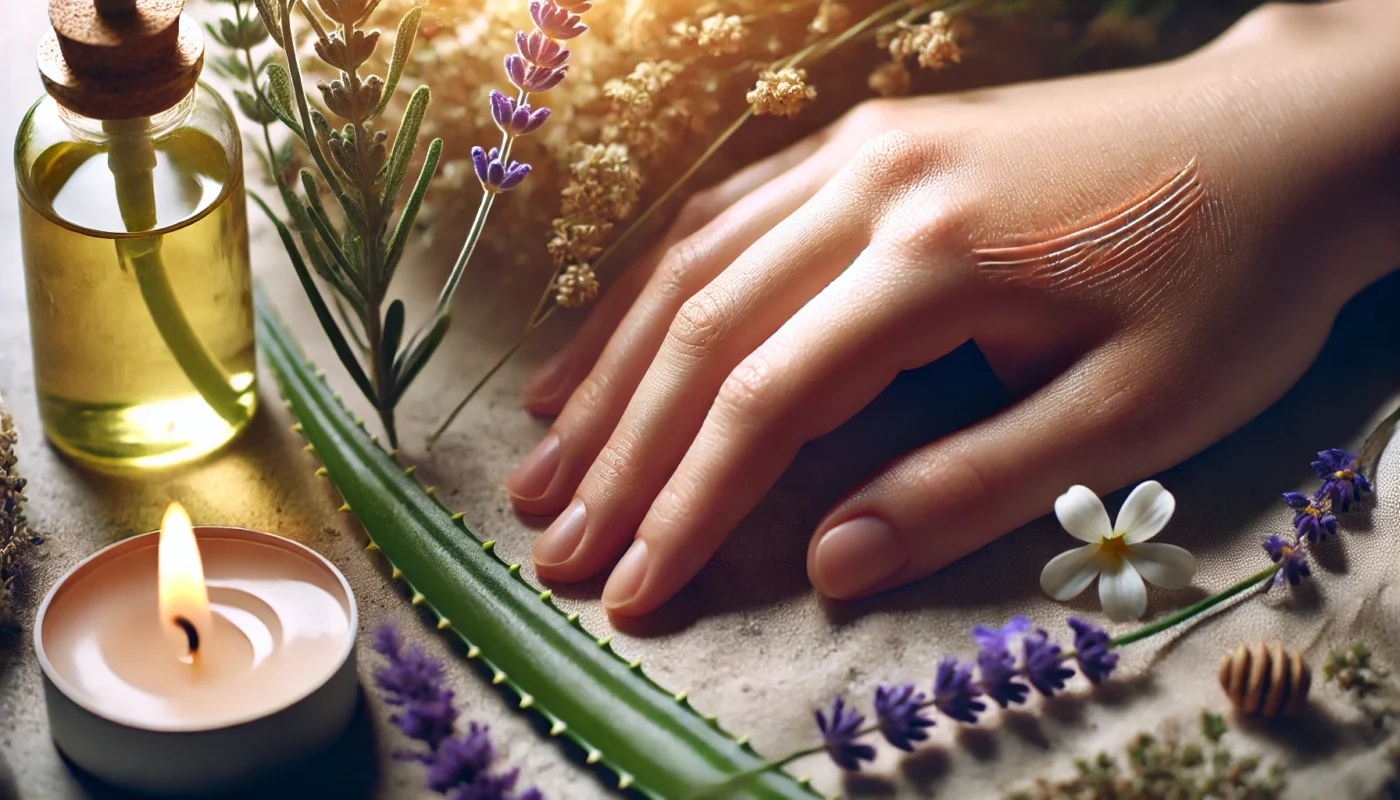Sunburn occurs when the skin is overexposed to ultraviolet (UV) rays from the sun, leading to damage at the cellular level. This damage triggers an inflammatory response, which can result in redness, pain, and, in severe cases, blistering. If the damage penetrates deeply enough, it can affect the dermis, leading to scarring.
You may also like: Essential Tips for Sun Protection Daily
Cellular Damage and Inflammatory Response
The process begins when UV radiation penetrates the outer layers of the skin, causing direct damage to the DNA within skin cells. This molecular disturbance triggers a cascade of biological responses. The body recognizes the damage and initiates an inflammatory response to repair and protect the affected area. Blood vessels dilate, increasing blood flow to the area and causing the characteristic redness and warmth associated with sunburn.
Deep Dermal Impact
When sunburn penetrates beyond the epidermis to the dermal layer, it poses a greater risk for long-term damage. The dermis houses collagen and elastin fibers, essential for skin elasticity and strength. Damage here can disrupt these fibers, leading to a breakdown in skin structure. As the body attempts to repair this deeper damage, the formation of fibrous tissue can lead to scarring.
The Role of Collagen in Scar Formation
Collagen is a protein that acts as the building block of skin repair. During the healing process, fibroblasts in the dermis produce collagen to mend the damaged area. However, if collagen is produced in excess or is not properly aligned, it can lead to the formation of scars. These scars may manifest as raised, discolored areas that differ in texture from the surrounding skin.
Risk Factors for Sunburn Scarring
Certain factors can increase your risk of developing sunburn scars. Understanding these can help you take preventive measures to protect your skin.
Skin Type and Sensitivity
Individuals with fair skin have less melanin, the pigment that provides some protection against UV radiation. This reduced natural defense makes them more susceptible to sunburn and subsequent scarring. Those with sensitive skin may also experience more severe reactions to sun exposure, increasing their risk of long-term damage.
Genetic Predisposition
Genetics play a significant role in how your skin heals and scars. If your family has a history of keloids or hypertrophic scars, you may be genetically predisposed to developing similar scars after a sunburn. Understanding your genetic risk can help you take proactive steps in sun protection.
Frequency and Intensity of Sun Exposure
Frequent or intense sun exposure without adequate protection increases the likelihood of severe sunburn and subsequent scarring. Outdoor workers, athletes, and sunbathers are particularly at risk. The cumulative effect of repeated sun exposure can exacerbate skin damage over time, making scarring more likely.
Preventing Sunburn Scarring
Prevention is the best approach when it comes to sunburn scarring. Here are some strategies to protect your skin effectively.

Consistent Use of Sunscreen
Applying a broad-spectrum sunscreen with an SPF of at least 30 is one of the most effective ways to prevent sunburn. Choose a sunscreen that protects against both UVA and UVB rays for comprehensive protection. Reapply every two hours, or more often if swimming or sweating, to maintain its effectiveness.
Protective Clothing and Accessories
Wearing protective clothing can significantly reduce your exposure to harmful UV rays. Opt for long-sleeved shirts, wide-brimmed hats, and UV-protective sunglasses. Look for clothing with a UPF (Ultraviolet Protection Factor) rating for added protection. These garments are designed to block UV radiation and offer a practical way to shield your skin.
Seek Shade During Peak Hours
Avoid direct sunlight, especially during peak hours (10 a.m. to 4 p.m.), when UV rays are strongest. Seeking shade or using an umbrella can provide additional protection. Planning outdoor activities in the early morning or late afternoon can help minimize sun exposure.
Hydration and Nutrition
Maintaining adequate hydration and a balanced diet rich in antioxidants can support skin health and resilience. Water helps keep skin hydrated, reducing the likelihood of peeling and scarring. Foods high in vitamins C and E, such as fruits, vegetables, nuts, and seeds, can help repair and protect the skin by neutralizing free radicals and promoting collagen production.
Regular Skin Checks
Perform regular skin checks to monitor for signs of sun damage and scarring. Early detection of changes in skin texture or color can prompt timely intervention. Consulting with a dermatologist for routine skin assessments can provide professional insight and recommendations tailored to your skin type and lifestyle.
Managing Sunburn Scars
If you already have sunburn scars, there are several methods to minimize their appearance and promote healing.
Topical Treatments
Over-the-counter creams containing ingredients like silicone, vitamin E, or retinoids can help fade scars over time. Silicone gels create a protective barrier that can flatten and smooth scars. Retinoids promote cell turnover and collagen production, improving skin texture and reducing discoloration.
Natural Remedies and Their Benefits
Some individuals find relief using natural remedies, such as aloe vera, honey, or coconut oil. Aloe vera has soothing properties that can reduce inflammation and promote healing. Honey is a natural humectant, keeping the skin moisturized, while coconut oil can offer both hydration and anti-inflammatory benefits. These substances can aid in the healing process when used consistently.
Medical Interventions for Severe Scarring
For more severe scarring, medical treatments such as laser therapy, microdermabrasion, or chemical peels may be necessary. Laser therapy targets and breaks down scar tissue, promoting the growth of healthy skin. Microdermabrasion exfoliates the skin, reducing scar appearance, while chemical peels remove damaged outer layers. These procedures should be performed by a licensed dermatologist to ensure safety and effectiveness.
Psychological Impact and Support
Sunburn scars can affect self-esteem and confidence, leading to emotional distress. Seeking support from friends, family, or mental health professionals can be beneficial. Joining support groups or online communities for individuals with similar experiences can provide comfort and coping strategies.
What to Do If a Scar Gets Sunburned
Protecting existing scars from further sun damage is crucial, as sun exposure can exacerbate discoloration and texture changes.

Immediate Care and Soothing
If a scar gets sunburned, apply a cool compress to soothe the area and reduce inflammation. This immediate care can prevent further damage and promote healing. Avoid further sun exposure until the burn heals to prevent worsening of the scar.
Importance of Moisturization
Keeping the scar moisturized with a fragrance-free, hydrating lotion can prevent dryness and peeling, which could worsen the scar’s appearance. Moisturizing regularly helps maintain the skin’s barrier function and promotes optimal healing conditions.
Consult a Dermatologist for Professional Guidance
If a sunburned scar becomes painful, swollen, or shows signs of infection, seek professional medical advice. A dermatologist can provide targeted treatments and recommendations to prevent further damage. They may suggest specialized creams or interventions to address specific concerns related to the scar.
Protective Measures for Future Sun Exposure
Once the initial sunburn heals, take extra precautions to protect the scar from future sun exposure. Use high-SPF sunscreen and cover the scar with clothing or a bandage when outdoors. Being diligent in protecting the scar can prevent further discoloration and promote a more even skin tone.

Conclusion
Understanding and preventing sunburn scarring requires a comprehensive approach that includes sun protection, proper skin care, and, when necessary, medical interventions. By taking proactive steps to protect your skin and manage existing scars, you can maintain healthy, vibrant skin and reduce the risk of long-term damage. Remember, the best defense against sunburn scarring is prevention, so prioritize sun safety in your daily routine.
By implementing these strategies, you can enjoy the great outdoors while safeguarding your skin’s health and appearance. Embrace sun protection as a fundamental aspect of your skincare regimen to ensure lasting skin health and confidence.
Further Reading:
Scar Management after Burn Injury
sunburn, sunburn scarring, skin health, sun protection, skincare tips, scar treatment, UV protection, collagen, skincare routine, natural remedies, dermatology, moisturizing, sun exposure, prevention, skin hydration.
Important Note: The information contained in this article is for general informational purposes only, and should not be construed as health or medical advice, nor is it intended to diagnose, prevent, treat, or cure any disease or health condition. Before embarking on any diet, fitness regimen, or program of nutritional supplementation, it is advisable to consult your healthcare professional in order to determine its safety and probable efficacy in terms of your individual state of health.
Regarding Nutritional Supplements Or Other Non-Prescription Health Products: If any nutritional supplements or other non-prescription health products are mentioned in the foregoing article, any claims or statements made about them have not been evaluated by the U.S. Food and Drug Administration, and such nutritional supplements or other health products are not intended to diagnose, treat, cure, or prevent any disease.

